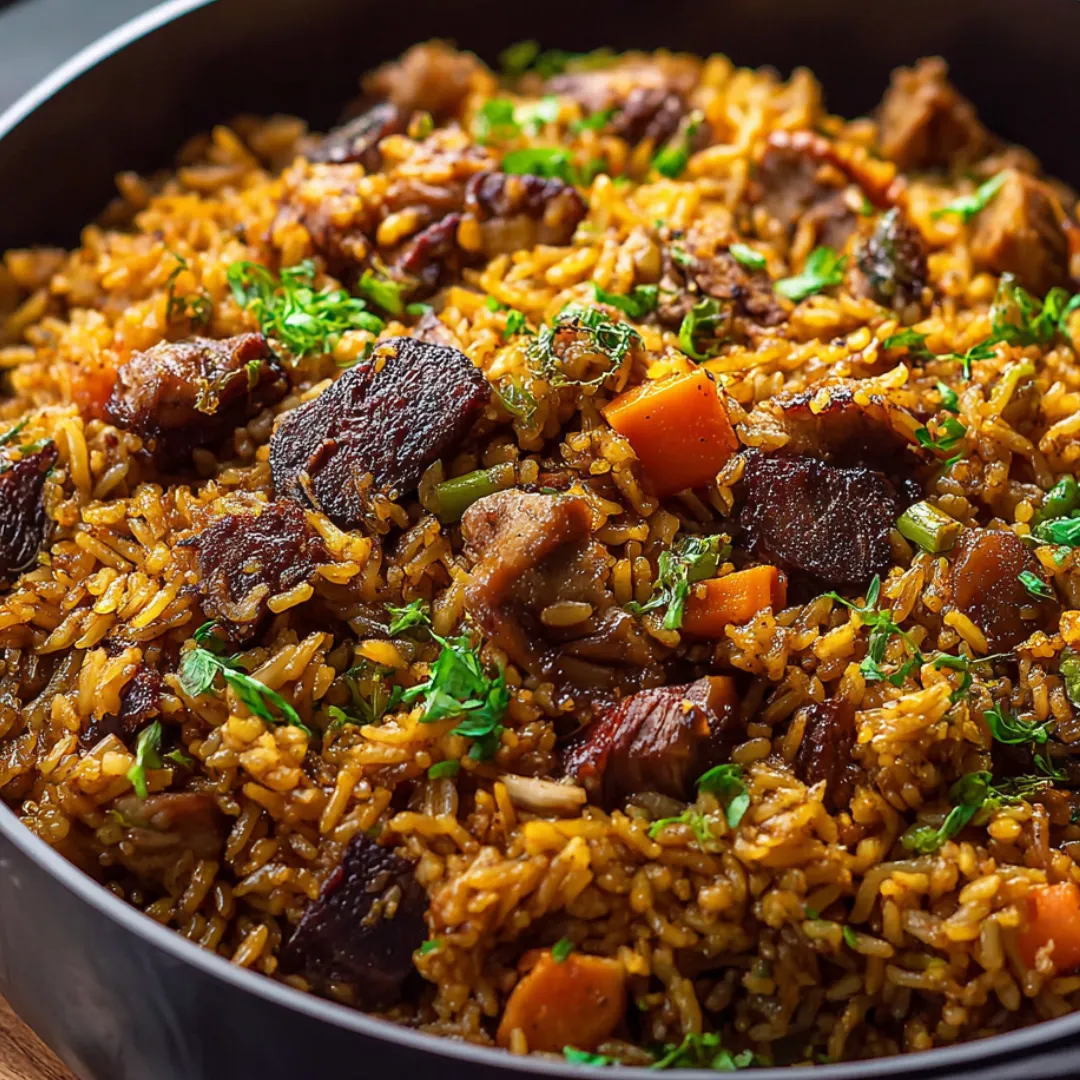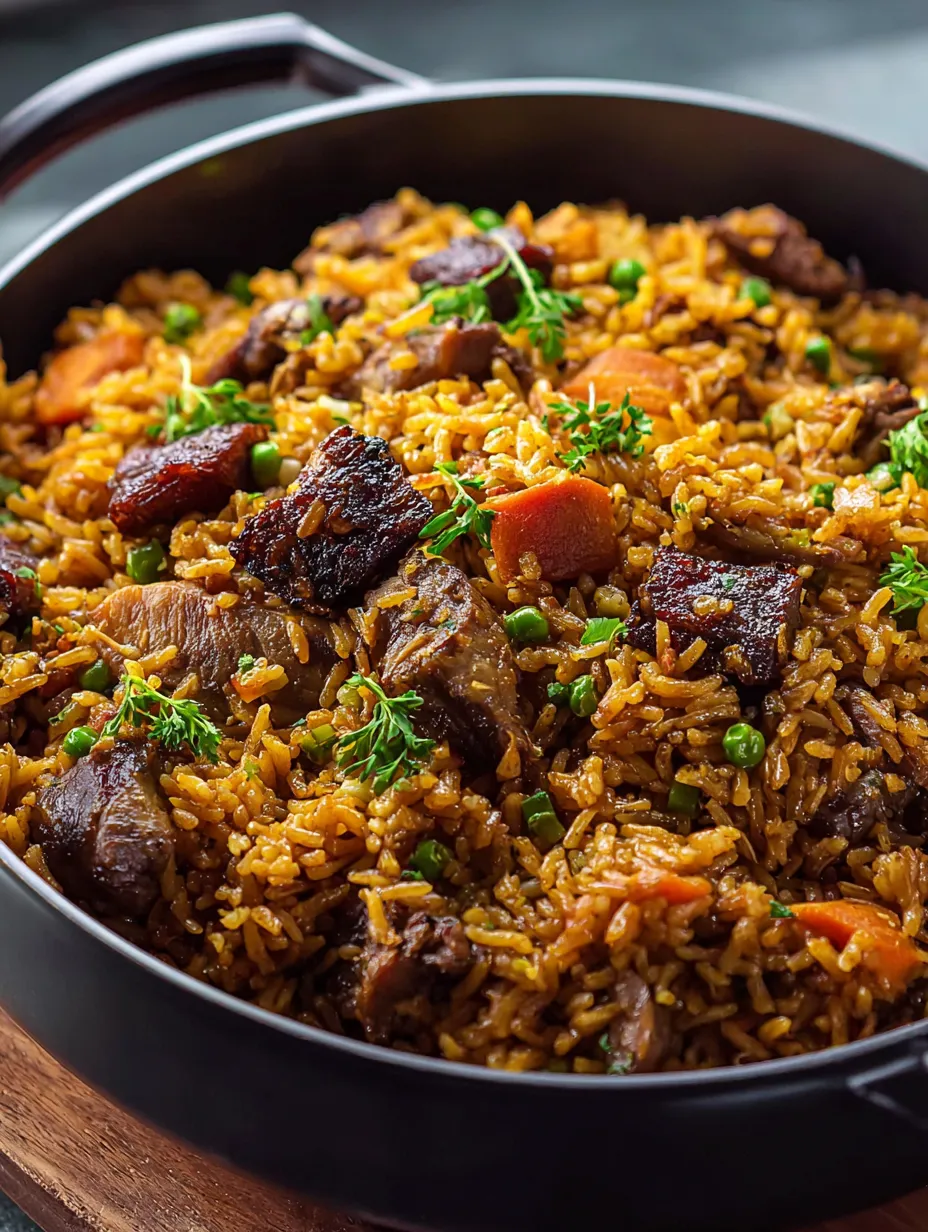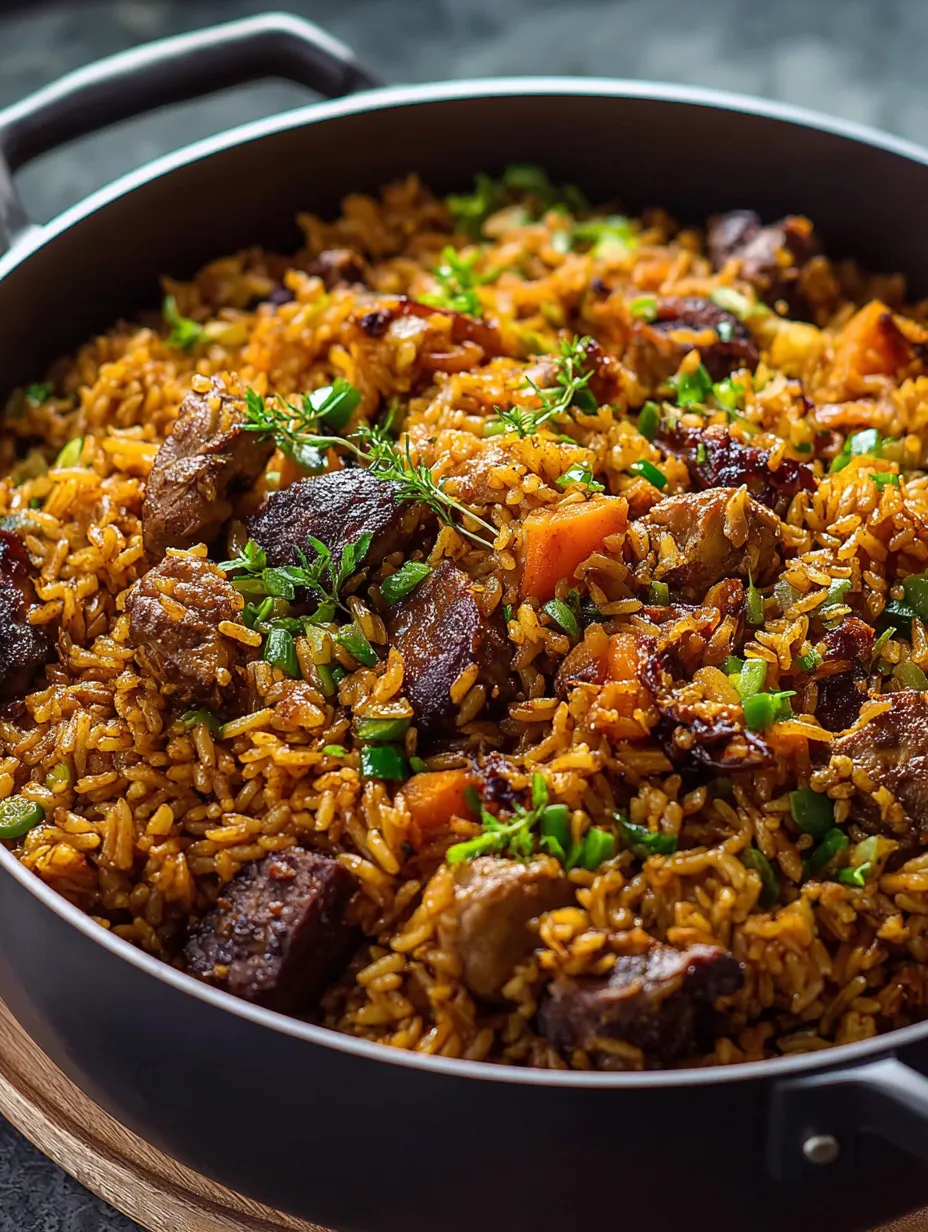 Save Pin
Save Pin
Tender chicken gets caramelized just right, then simmers alongside coconut-kissed rice and creamy pigeon peas, all in one pot—this Trinidadian comfort food is like a hug for your senses. It always takes me back to noisy family nights, everyone laughing while that amazing smell fills up every corner of the kitchen.
As a kid, I’d peek over the counter as my aunt slowly caramelized sugar, waiting until it was just the right color. Everyone at the table would load up their plates again and again, hoping there’d still be enough left over to sneak a serving the next day.
Mouthwatering Ingredients
- Hot water: Helps your rice plump up nice and fluffy
- Tomato ketchup: Optional for a sweet little tang
- Culantro: This brings a real island kick; pick fresh, fragrant leaves if you can
- Pumpkin: Chunks of pumpkin give that pop of orange and a touch of sweetness—make sure it’s a solid, bright piece
- Pigeon peas: Creamy peas for extra protein—drain them well if you use canned ones
- Onion: Gets soft and sweet, really intensifies the flavor
- Garlic: Use fresh, tight cloves for the best punch
- Salt and black pepper: Rounds out and highlights everything else
- Brown sugar: Makes that deep, tasty caramel base—go for dark brown if you want extra richness
- Coconut milk: Adds a mellow, dreamy richness—homemade is awesome, but canned totally works
- Chicken: Grab fresh, bone-in pieces—they cook up juicy and bring the most flavor
- Parsley: Toss in some fresh parsley to brighten it all up
- Pimento pepper: Also called flavor pepper—try to get a lively red or orange one
- Parboiled rice: This rice holds up to stewing and doesn’t turn mushy—aim for long-grain when you can
- Ginger: Totally up to you, but fresh ginger adds warmth—peel the root and slice it thin
- Green seasoning: The secret to real Trini flavor—it’s full of herbs and bold aromas; if store-bought, check it’s fresh with no weird additives
Simple How-To Steps
- Wrap It Up and Taste:
- When the rice is nice and tender and no liquid’s left, lift the lid and fluff with a fork. Try a bite and add salt or pepper if you want. Dig in—this dish is best hot from the stovetop!
- Steam to Finish:
- After it boils, turn the heat way down and cover. Let it all cook together about half an hour. Peek if you must to make sure nothing sticks—add some water if it’s getting too dry.
- Pour in Coconut Milk and Water:
- Next up, add your coconut milk and hot water. Stir it all around and let the pot come to a rolling boil on high. You’ll spot the color deepen as the flavors blend.
- Add Rice and Veggies:
- Toss in the rice, then pumpkin, pimento, onion, garlic, and ginger. Finish with parsley, salt, pepper, and a squirt of ketchup if you’re into it. Mix until everything’s spread out.
- Sauté with Peas:
- Blend the pigeon peas in with the chicken and let them hang out for five minutes or so—this boosts nutty flavor in the peas.
- Sear the Chicken:
- Chicken time! Drop your seasoned pieces in the caramel sugar. Stir them so they pick up the color. Let them brown on the outside; you want that deep shade. Cook long enough for extra liquid to cook off.
- Melt the Sugar:
- Evenly dust brown sugar in your heavy pot. Use medium heat and let it melt until you see lots of small bubbles and the shade turns deep brown—don’t step away, you want it dark but not burnt!
- Season the Chicken:
- Clean the chicken, pat it dry, then massage green seasoning into every nook and cranny. Let it chill for a bit so those flavors really get inside.
 Save Pin
Save Pin
I’m all about the coconut milk—its creamy vibe reminds me of grandma’s kitchen every time. If you can, buy the freshest coconut or the thickest, top-notch canned stuff. Every time we made pelau at home, it felt like a little party, with everyone snacking before dinner was even ready.
Keeping it Fresh
Let everything cool completely first. Put leftovers in airtight containers—they’re fine in the fridge up to four days. Freeze them for two months. To heat again, just add a splash more coconut milk or water and warm on the stove or microwave. The longer it sits, the tastier it gets!
Swaps if You Need Them
If stores are out of pigeon peas, use kidney beans or black eyed peas—they still taste awesome. If you can’t find pimento pepper, use a small piece of red bell pepper plus a bit of hot sauce. No culantro? Grab more cilantro, and toss in a little extra parsley for good measure.
How to Serve
 Save Pin
Save Pin
Dish pelau straight from the pot and set it beside a crisp green salad, creamy avocado slices, or slaw. Top it off with hot sauce and add cucumber chow for that bright, crunchy twist.
Culture and Origins
This dish is cherished all across Trinidad and the Caribbean, tracing flavors to Africa, India, and Creole heritage. Caramelizing sugar and slow cooking meat? That’s an old African skill. The spices and peas? Thanks to Indian and Creole cooks. Families serve this at parties, beach outings, and laid-back Sunday meals.
Common Recipe Questions
- → What adds flavor to the chicken here?
The chicken sits in green seasoning—a lively blend of herbs, garlic, and pepper. This gives it bold taste right from the start.
- → Why start off by browning brown sugar?
Browning the sugar first gives the dish its signature look and layers on a deep, rich taste. It pulls out big flavor at the base.
- → Which kind of rice should I use?
Go for parboiled rice. It stands up to the heat, soaks up all the flavors, and you end up with that satisfying bite.
- → Is there a way to make it saucier?
For sure. Just splash in extra coconut milk or a bit more water as it cooks and you'll get a creamier texture.
- → What kinds of veggies and herbs go in?
You mix in pumpkin, onions, pimento pepper, garlic, parsley, and culantro throughout for an extra boost of flavor.
- → Should I pick fresh or canned pigeon peas?
Either works fine. Canned saves time, while fresh peas hold onto a firmer, earthier feel if that's what you like.
